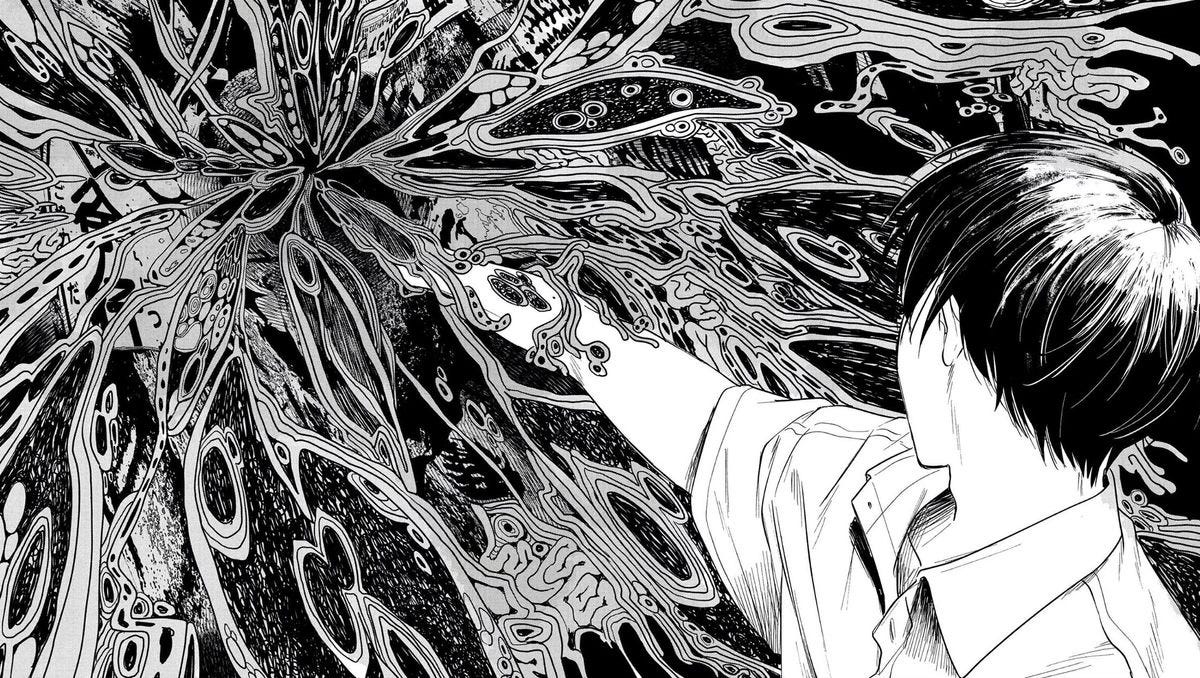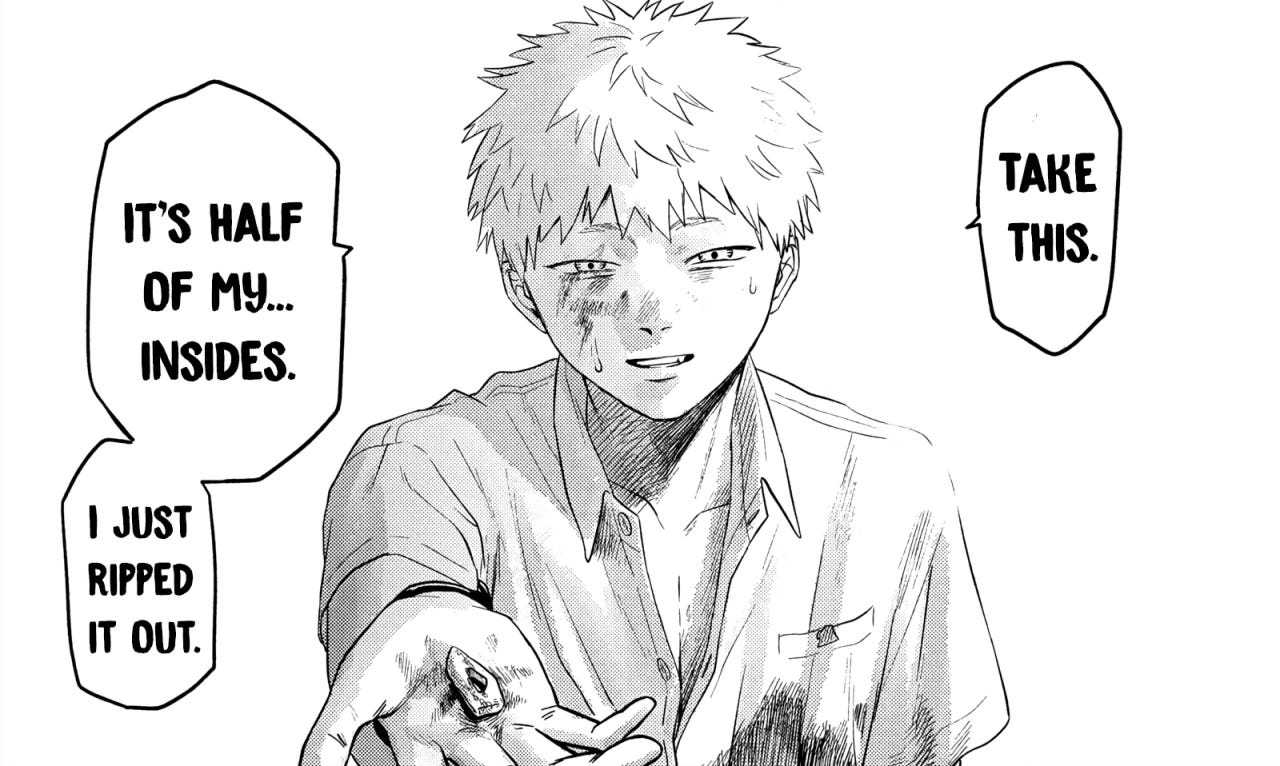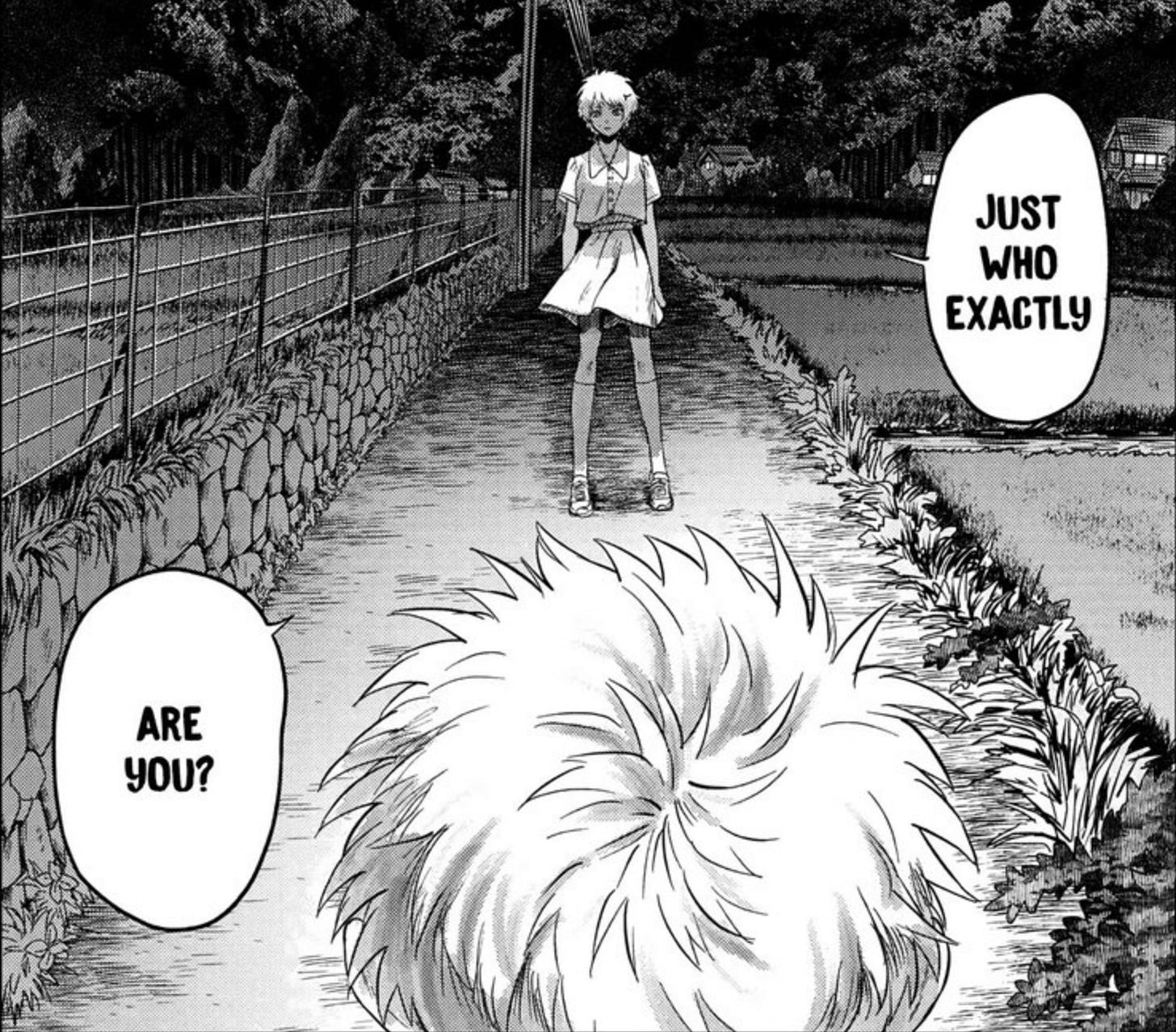The Summer Hikaru Died: Making a Monster
Making a monster is one thing, but how do you make it meaningful?
Preface!
The Summer Hikaru Died has become something of an indicator for me. What I mean by that is, I’ve started looking for stuff that has any similar elements, asking for recommendations “that are like Hikaru.” It’s the bar-setter. That’s why I picked up After God, because there was the smallest hint of a shared element.
I also started reading it right around the time I was getting a bit weary of traditional shonen manga. In that sense, it really expanded my tastes in the medium.
Now that the anime trailer has dropped and the fervor has recommenced, it only felt natural to revisit the series from a different, but similar angle. Funny, the more I write about the same series, the more storytelling elements weave together. My first piece about Hikaru was about how well they wield subtlety, and that’s going to be a big theme in this one too.
Only this time we’re zooming in even more to look at the monster of The Summer Hikaru Died. The monster that could show up at any moment.
Preface over.
Needless to say, The Summer Hikaru Died has had a profound impact on me as a reader and as a creator. I’ve often fashioned myself a “monster maker” in that I love the process of creating monsters, particularly monsters that go beyond the traditional scope of “monster bad, humans good.”
Maybe that’s why I have fallen so deeply in love with manga in the first place, because so many series deal with the overlap between humans and monsters.
I’ve alluded to this before, but I’m nearing the completion of my Masters degree in children’s and YA literature, and my critical thesis was all about the uses of monsters and the roles they serve to encourage new perspectives and shift the way we think, and yet still be scary and fun.
I’ve also alluded—many, many times—to the fact that for one whole year in college, I hosted a scary movie Tuesday. Not just that, but my wife (Hi honey!) is a horror filmmaker and we watch pretty much every horror we possibly can. All that said, I like to think I have a pretty good grasp on the genre, and of the role that monsters serve not just in kids stories, but in stories for all ages.
And, by extension, what makes a monster work and what makes a monster fail.
Before we get into The Summer Hikaru Died, here’s what you need to know.
Yoshiki and Hikaru have been best friends all their lives, but one day, Hikaru comes back and Yoshiki notices that, despite looking like Hikaru, this is absolutely not Hikaru. But this monster pleads with Yoshiki to just let him be Hikaru. He has all of HIkaru’s memories, he just wants to be Hikaru. And what a wonderful world of complexity that kicks up. However, inside of Hikaru is a monster, and we don’t know what it wants, what it’s capable of, or what it really looks like.
And that’s all you need to know.
The Summer Hikaru died exhibits a lot of traits that resound for good monster making. For starters, this monster is—as of yet—unidentifiable. Other than being an amoebic blob that inhabits the body formerly owned by Hikaru, it doesn’t really have a form. Which is what makes it such an effective storytelling weapon. All that tension we feel around what this monster could actually look like is only building because we’re essentially guessing.
That’s the best place to be when making a monster. It works just like The Babadook, which remains one of my favorite horror movies for many reasons, but one in particular resonates here—we never really see the monster. We see glimpses, moving shadows, storybook illustrations, but never the whole monster all at once.
The problem is, in today’s day and age when we’ve seen so many monsters from so many sources—puppets, CGI, motion capture, etc—it’s very, very hard to make a monster that is inherently scary to look at. And even when you do, it’s not so much a “oh gosh, I can’t look at it” but more like a “hey, he’s pretty gnarly.”
The movie Oddity, for instance, which also ranks in my upper echelon, introduced us to this gnarly wooden man who I kept admiring for his originality. He didn’t look like anything I’d seen before, and the way the movie used him made him infinitely compelling.
Then again, he wasn’t really a monster, so to say, but you get the gist.
So many movies, comics, manga, etc. deflate when they reveal the monster. Giving evil a face makes it familiar, it makes it comprehendible. But for stories that never reveal the monster, it never becomes those things. It remains mysterious, as viewers, we still fill it with our own questions.
The Summer Hikaru Died doesn’t just not reveal the monster, but when they do show creepy shadows or inexplicable forms, it’s subtle enough to leave us wondering. Just like the Babadook, there’s enough room for questioning what exactly this monster is and, by extension, what it’s capable of.
A manga example of what’s essentially the complete opposite—PTSD Radio. Never before have I read or seen a story so willing to just drop new freaky monsters in on pretty much like, every other page. Just a new face, a new creepy posture, a new clump of hair. There is nothing subtle about PTSD Radio. And for the most part, it works. But the challenge is, now that readers have seen one monstrous entity after another, how do you keep it fresh and frightening?
The Summer Hikaru Died doesn’t have to worry about that.
Another monstrous aspect that you have to take into account when making a monster is assessing what the monster stands for. Now, to be fair, a monster can just be a monster. Big teeth, scary face, killin’ everybody. But what makes monsters last is when they serve a role in the story beyond just inducing fear.
This was a big focus in my critical thesis about the many faces of monsters too. There are kids books like The Otherwoods, who use monsters to stand in for the aggressions against trans children, that wield monsters masterfully to not just be frightening, but to be frightening with a purpose. To make a point.
Hikaru’s monster is the same in that it stands in for the obstacles and fears a closeted homosexual faces in a small rural town. Whether that small rural town is in Japan, America, or the moon, the theme is pretty much the same. Monsters take these big issues and couch them in the form of an entity. For young readers, that’s important because it does give a form to complex feelings and emotions. And by young readers, I mean adults too, don’t we all sometimes need a spoonful of sugar to make the medicine go down?
For me, my biggest learning curve in creating monsters was in putting intent behind the monster. Not having a monster just for the heck of it, but because nothing else would do. Because monsters are uniquely constructed to fill a very specific role in story. A role that The Summer Hikaru Died makes the most of. What makes a great monster is when that monster is integral to the story. It couldn’t have been told any other way, with any other monster.
Take the classic movie monster, for instance—Wolfman, Swamp Creature, etc. In no way am I slighting such classic monsters, I adore them, but if you were to swap out Wolfman for, I don’t know, Catman, Bearman, what do you lose? What changes? Not much. Just the face of the monster.
The form a monster takes is just as important sometimes. The Summer Hikaru Died is putting a lot on their monster, but since the monster is currently operating under the face of Hikaru, it is integral to the story. It could not take any other form. And that makes it a great monster.
Hey creatives, let’s create a monster! Monsters are vessels to convey themes and deeper meanings, so I want you to think of three things when crafting your story monster.
What is this monster embodying? Could be something macro like the unfairness of the world, could be something micro like finding a sense of identity.
Using that, what physical traits would this monster have? If it’s a stand in for corporate greed, maybe it’s slimy and greasy. If it’s a stand-in for loneliness, perhaps it’s barely corporeal, almost like a shadow.
What role will this monster play in your story? It could be a villain, sure, but it could also be background noise, an “imaginary” creature, etc.
Now tell that story!
Hey, fans of The Summer Hikaru Died, what do you want this monster to be? Big picture question, but basically I’m asking what you want to see from this monster as the story progresses? Do you want to see it continue as is, living this double life as Hikaru, or do you want to see it start growing in power and consequence?








Great post! Regarding "Hikaru" I don't think it can stay around by the end, for the sake of Yoshiki's character arc I think it's necessary for "Hikaru" to leave at some point once Yoshiki has made peace with his grief and is ready to leave the town. I think the story is also moving towards the monster finding its own identity beyond "Hikaru" so I'm excited to see how that develops